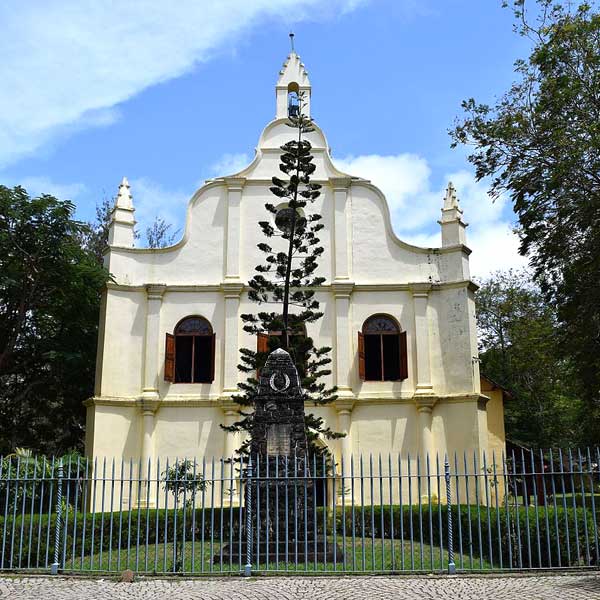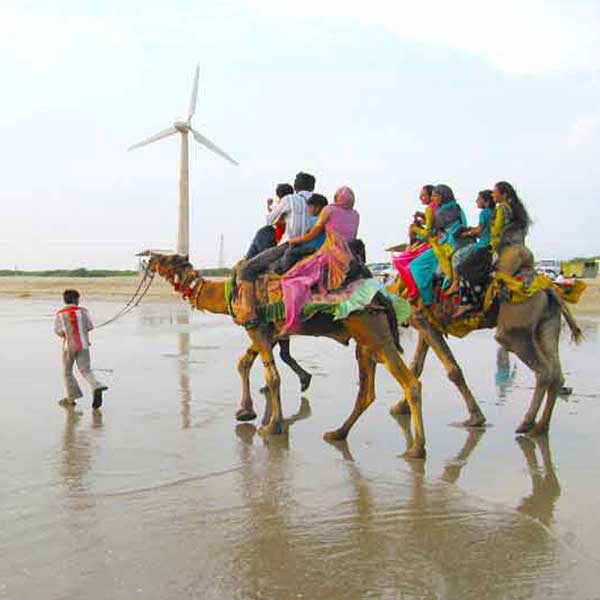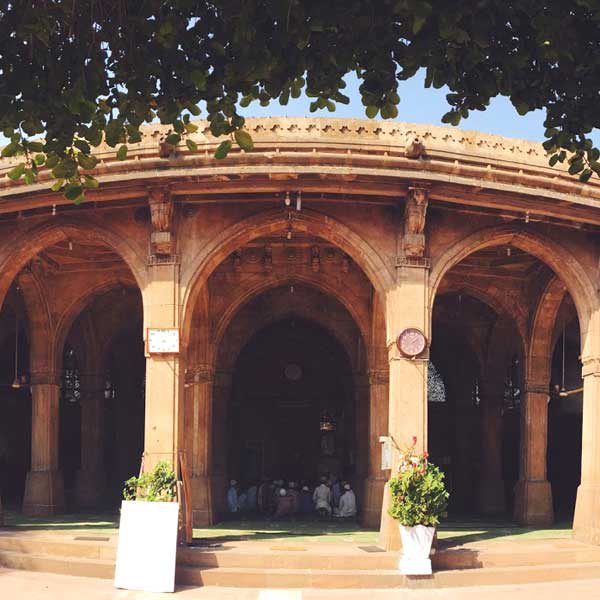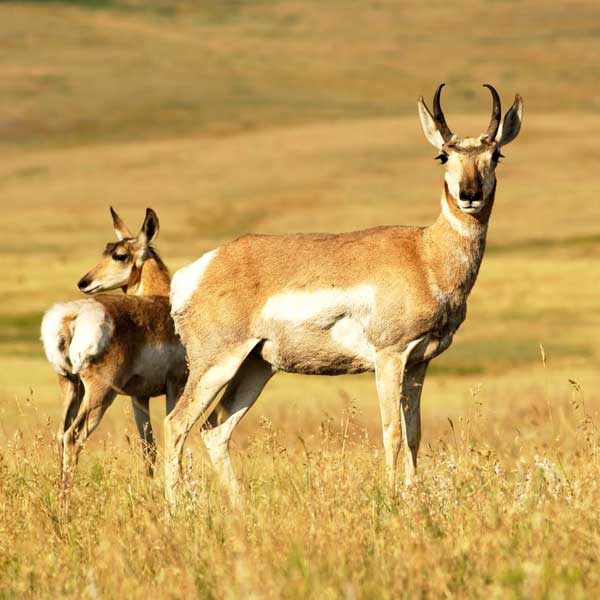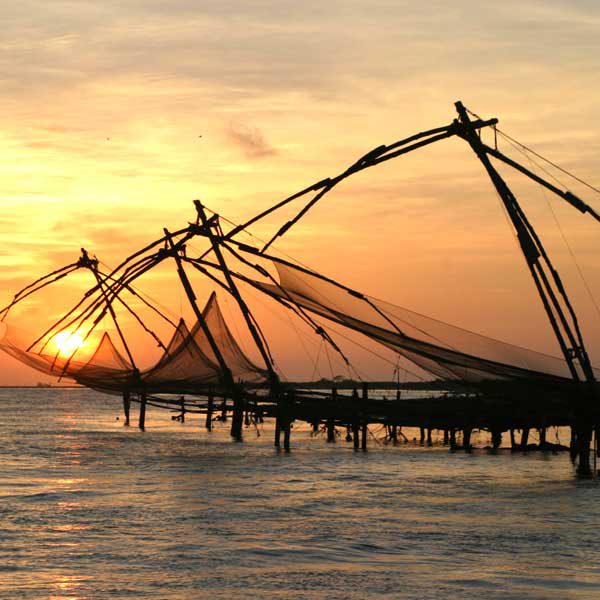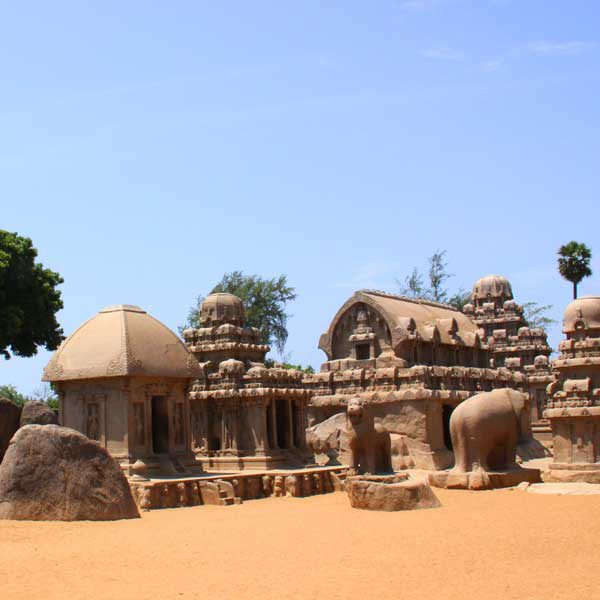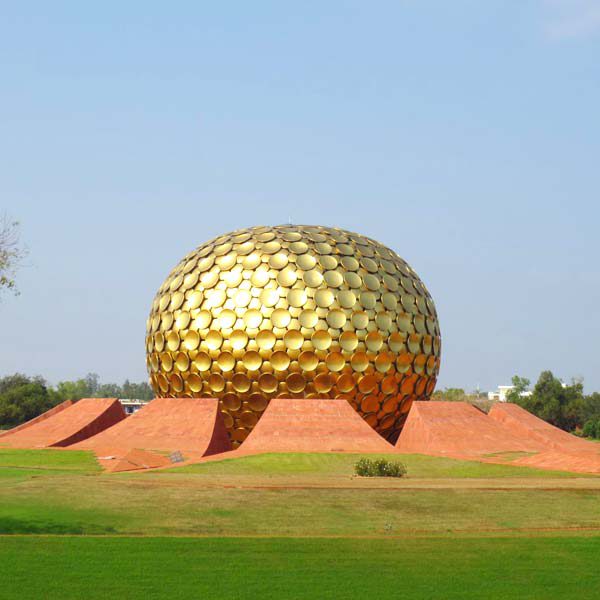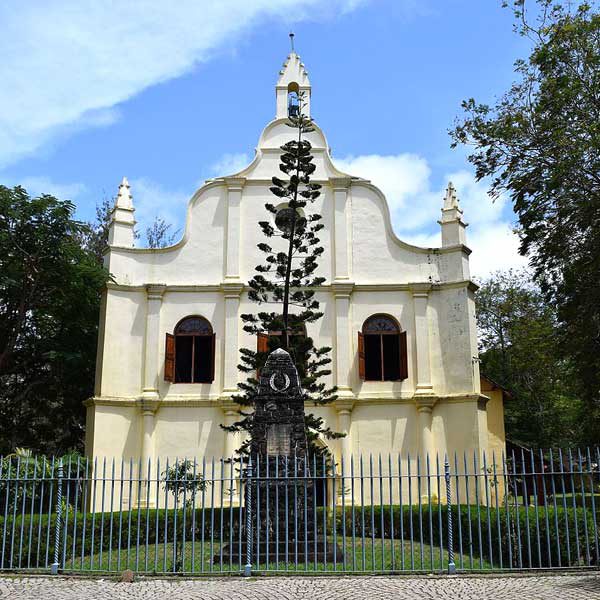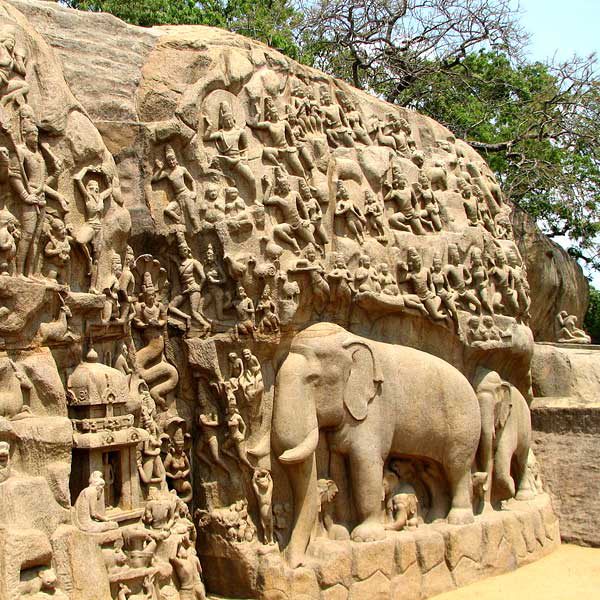Description
Day 01: Arrive in Bangalore
Bangalore is the capital city of the southern Indian state of Karnataka. It is also known as the Garden City because of its many beautiful gardens and parks. Though the origin of Bangalore is ancient, the present-day city was founded in the 16th century and has since continued to be an important administrative center. Because of the high concentration of IT industry, it also called the Silicon Valley of India.
On arrival, you will be welcomed by our staff and transferred to your hotel.
(Rooms will be available from 1200 hrs to facilitate immediate check in).
Overnight in the hotel.
Day 02: Bangalore –Srirangapatna – Bandipur
In the morning have small city tour of Bangalore.
You will visit Vidhan Sabha (legislative assembly) with its impressive facades and City Museum that was opened in 1886, one of the oldest in country with 18 galleries including Neolithic finds from the Chandravalli excavations, and from Indus Valley, especially Mohenjodaro antiquities. There are also antique jewellery, textiles, coins, art, miniature paintings and geological items.
One of the major landmarks of the city, the Bull temple attracts tourists and devotees alike for the magnificent monolithic Bull structure. Built by Kempe Gowda, the Nandi, the sacred bull, carved out of a single boulder, is 6.1 meter long and 4.6 meter high
Later drive to Bandipur enroute visiting Srirangapatna, famous for the island fortress of the legendary warrior king Tipu Sultan.
Srirangapatna fort, also called as Tipu’s palace is one of the most popular monuments in India. The architecture of the palace is a mix of Indo-Islamic style and the huge Persian inscription on the entrance gate embodies the date on which the fort was constructed, i.e 1537. The fort was built in a double wall defense system and has four entrances, namely – Delhi, Bangalore, Mysore & Water and Elephant gates.
Gumbaz is the burial chamber of Tipu Sultan, his father Haider Ali and mother Fatima Begum. It is built on a lifted platform and is circumvented by various other tombs of his relatives and nobles. Masjid-e-aksa a mosque is situated next to the Gumbaz.
On arrival in Bandipur, check in at the hotel.
Overnight in the hotel.
Day 03: Bandipur – Mysore
In the morning have Jeep Safari in the national park.
Bandipur has fairly open forest area with good chance to spot wildlife. It is one of the best places in the world to watch wild elephants (Asian Elephant). There are more than 1900 wild elephants here that make seasonal migration between Bandipur and Nagarhole National park.
A moderate climate and abundant wildlife makes Bandipur an exotic paradise for wildlife lovers. Beautifully surrounded by hilly forests and plenty of waterholes, this wild life park provides you a magnificent place to holiday in. The chirping birds, langurs jumping from one tree to another and herds of deer grazing unconcernedly in between the holiday huts provide you unforgettable wildlife experience of your life.
In the afternoon drive to Mysore.
Mysore has been always associated with the royal families and their patronage, be it the Wodeyars or the Sultans. It still retains its tradition in music and dance, art and literature and its time-honored crafts. The city is known for its resplendent palaces and majestic buildings and enchants you with quaint charm, verdant gardens, and its sacred temples.
On arrival in Mysore, check in at hotel.
Overnight in the Hotel.
Day 04: Mysore – Hassan
In the morning have half day sightseeing tour of Mysore.
You will visit Brindavan Gardens, located at the Krishna Raja Sagar Dam. Spread over 150 acres, it has since the 1960s provided the backdrop for many Indian films.
St Philomena’s Church, built to honour St Philomena, followed the Neo Gothic style of architecture. The Cologne Cathedral was the inspiration of the Church. The windows depict the birth of Christ and the important events in his life.
Drive to Chamundi Hill, where you are welcomed by a large colorful statue of Mahishasura, the demon after whom Mysore is named. The gigantic bull, vehicle of Shiva, is still worshipped
Also visit Maharaja Palace built in 1857 in Indo-Saracenic style. The Palace is a treasure house of exquisite carvings and works of art from all over the world.
In the afternoon drive to Hassan.
On arrival in Hassan, check in the hotel.
Overnight in the hotel.
Day 05:Hassan
Today you will have excursion tour of Shravanabelagola, Belur and Halebid.
Shravanabelagola is home to Asia’s largest monolithic statue Lord Gomateswara here towers 58 ft., looming atop the picturesque Vindhyagiri Hill. Every 12 years. Jain pilgrims gather here to participate in a splendid head-anointing ceremony. Shravanabelagola has over 500 inscriptions, and some of them are recording death by starving (`sallekhana’) by Jaina ascetics and laymen.
Belur, the first capital of the Hoysala dynasty is 38 Km from Hassan. It is known for its exquisite temples, of which the Chennakeshava Temple is a fine example. It took 103 years to complete and the façade of the temple is covered with intricate sculptures and frescoes, which are awe-inspiring in their workmanship. In the temple are hand-lathe turned filigreed pillars, each different from the other. Veeranarayana Temple and the smaller shrines are worth a visit.
Halebid is attested by its architectural monuments which still rank among the masterpieces of the Hindu art. The Hoysaleawara temple dating back to the 12th century is outstanding for its wealth of sculptural details. The walls of the Hoysaleawara temple are covered with an endless variety of goddesses, animals, birds and dancing girls. No two facets of the temple are alike. Guarded by a Nandi Bull, it was never completed, despite 86 years of work. It is the most outstanding example of Hoysala art.Halebid also has a smaller temple called Kedareshwara and a little-visited enclosure containing three Jain bastis (temples) with fine carvings
Overnight in the hotel.
Day 06: Hassan – Hospet
In the morning drive to Hospet, the beautiful city once under the control of the Vijaynagar Empire. Till date, the most attracting part of this city is the remains of this great dynasty of Vijaynagar. Hospet is the main town providing the getaway for Hampi.
On arrival in Hospet, check in at the hotel.
Nearby Hospet is Hampi, a World Heritage Centre. Hampi is famous for its ruins belonging to the erstwhile medieval Hindu kingdom of Vijaynagar. The temples of Hampi, its monolithic sculptures and monuments, attract the traveler because of their excellent workmanship. The Hindu style of architecture found at Hampi reflects the splendor of the Vijaynagar Empire, renowned for re-establishment of Indian culture, its support for music, art and literature.
Overnight in the hotel.
Day 07: Hospet (Hampi)
Today you will have excursion tour of Hampi.
Hampi can be divided into two broad areas: the Hampi Bazaar area and the Royal center near Kamalapuram.
The 15th-century Virupaksha Temple is located in the Hampi Bazaar area. Hemakuta Hill, south of the Virupaksha temple, contains early ruins, Jain temples and a monolithic sculpture of Lord Narasimha, a form of Lord Vishnu. Two kilometers east of Hampi Bazaar, the traveler can see the World Heritage Vittal temple, built in the 16th century and the carvings on this temple give an insight into the architectural splendor achieved by the artisans of Vijaynagar Empire.
Between Hampi Bazaar and Vittal temple, one can see the deserted Sule Bazaar and the Achutraya temple. Monolithic statue of Lord Ganesh, Nandi, the Kodandarama temple and the Krishna temple are other places to visit in the Hampi Bazaar area.
The royal center is located between the Hampi Bazaar area and Kamalapuram. The Lotus Mahal is a blend of Indo-Islamic architecture and gets its name from the lotus bud carved on its domed and vaulted ceiling. The Elephant quarter is adjacent to this. It is a domed building, which housed the royal elephants. The Queen’s Bath, with its unique Islamic architecture, and the Underground Virupaksha temple are other important places to visit within the royal center.
In the evening return back to hotel in Hospet.
Day 08: Hospet – Badami
In the morning drive to Badami, the capital of the Early Chalukyas.
Badami (also known as Vatapi), is picturesquely situated at the mouth of a Ravine between two rocky hills. This historical place is worldwide popular for the cave temples built cutting rock inside the hill dating back to the 6th and 7th centuries. The Chalukyas laid the foundation of a unique style of architecture, which is a fine blend of North Indian Nagara style and the South Indian Dravidian style of architecture
On arrival, check in at the hotel.
In the afternoon have half day sightseeing tour Badami.
Visit famous rock-cut cave temples. There are four cave temples at Badami. These temples date back to the 6th and 7th century’s ad and ornately carved with figures of Hindu deities.
Three temples are dedicated to Hindu gods. The fourth one is a Jain temple and was built much later. Here you will find many Jain deities and a huge figure of Parshwanatha.
Within the ramparts of the fort, nestle a large granary, an underground chamber which must have served as a treasury or private audience hall and many other architectural marvels.
Overlooking the cave temples lays the 5th-century Agastya-Tirtha Tank dotted with temples dedicated to Vishnu and Shiva.
Overnight in the hotel.
Day 09: Badami (Aihole & Pattadakal)
In the morning have an excursion tour of Aihole & Pattadakal.
Aihole, located on the banks of the Malaprabha River, is a veritable mélange of ancient Hindu temple architecture. Hundreds of temple structures dot the serene surroundings of the village and the fields nearby. During the reign of the Chalukyas, Aihole was the first capital of the Chalukyan Empire.
The cluster of temples in Aihole belongs to two ages, first in the 6th and 7th centuries and the second set of temples belonging to the 12th and 13th centuries.
The prominent temple groups are the Kontigudi group and the Galaganatha group. The Kontigudi group is a set of three temples consisting of the Lad Khan temple, Huchiappayyagudi temple and the Huchiappayya math.
In the afternoon have excursion tour Pattadakal.
Set amidst a quaint landscape along the banks of the Malaprabha River, the picturesque village of Pattadakal is a UNESCO World Heritage Site for its ancient temple complex.
The second capital of the Chalukya dynasty after Aihole, Pattadakal’s magnificent 8th-century temples epitomizes the zenith of Chalukyan architecture. The sacred temple complex of Pattadakal consists of 10 major temples, each resplendent with beautifully textured carvings and pillars.
These magnificent temples imbibe elements of both the Dravidian or the Southern and the Nagara or the Northern (Indo-Aryan) styles of temple architecture. At the entrance of the site, you can see the 8th century temples of Jambulinga, Kadasiddeshvara, and Galaganatha with their curvilinear shikaras or spires.
The biggest temple dedicated to Virupaksheshvara, has a huge gateway and several inscriptions. In front of the temple is a majestic 2.6 m high Nandi. The Mallikarjuna and Papanatha Temples and the Jain Temple from the Rashtrakuta period are well worth a visit.
Return back to hotel in Badami for overnight.
Day 10: Badami – Goa
In the morning drive to Goa.
On arrival in Goa, check in at the hotel.
Overnight in the Hotel.
Day 11: Goa
Breakfast in the hotel.
Rest the day is free at leisure.
Overnight in the hotel.
Day 12: Goa – Mumbai
Morning is free at leisure on the beach.
In the afternoon, transfer to airport to board the flight for Mumbai.
Mumbai, India’s most cosmopolitan city is an ancient port and trading center. This palm- fringed shore of the Arabian Sea was the British Empire’s entrance to its `Crown Jewel’. Mumbai is also the centre for Hindi films. It is called Bollywood, with a credit of almost 900 films a year. Today it’s a teeming metropolis, commercial hub of an old civilization seeking to find its place in the New World Order.
On arrival in Mumbai, transfer to the hotel.
Overnight in the hotel.
Day 13: Mumbai
In the morning have excursion of Elephanta Caves by Jetty from Gateway of India.
Gateway of India was built to commemorate visit of King George V and Queen Mary for the Delhi Durbar in 1911. The gateway holds greater historical significance as the last of the British troops that left India by sea, marched through its portals.
Elephanta caves are consisting of rock cut temples dating back to the 5th century BC. The caves of Elephanta are of great touristic attraction in the vicinity of the Mumbai metropolis. Four rows of massive columns cut into solid rock form three magnificent avenues and lead to the outstanding three-headed sculpture Maheshmurthi representing Brahma the Creator, Vishnu the Preserver and Shiva the Destroyer. Dedicated to Shiva, the beauty and power of these phenomenal sculptures depicting the various manifestations of Shiva is overpowering. (Closed on Mondays).
In the afternoon have city sightseeing of Mumbai.
You will visit Mani Bhawan, one of the important places to visiti. Presently functioning as a Gandhi memorial, it used to be the Mumbai residence of Mahatma Gandhi.
The Hanging Gardens makes another must see site in Mumbai. The park was built during the early 1880s over Mumbai’s main reservoir at the top of the Malabar Hills. Nearby visit Tower of Silence, where Parsis leave their dead in the open.
One of Mumbai’s most unusual attractions, the Dhobi Ghat, an open air laundry with 700 washing platform made of stones which are more than 100 years old. You may see many dhobis (laundryman) literally beating the dirt from garments and clothes. Using outdoor troughs and dried in the sunshine, many tourists come here for photo opportunities.
A stroll down the Marine Drive is the best way to discover Mumbai. This winding stretch of road with tall buildings on one side and sea on the other extends from Nariman Point to Malabar Hills.
Overnight in the hotel.
Day 14: Mumbai – Departure
In the morning, transfer to International airport to board flight for onward destination.


